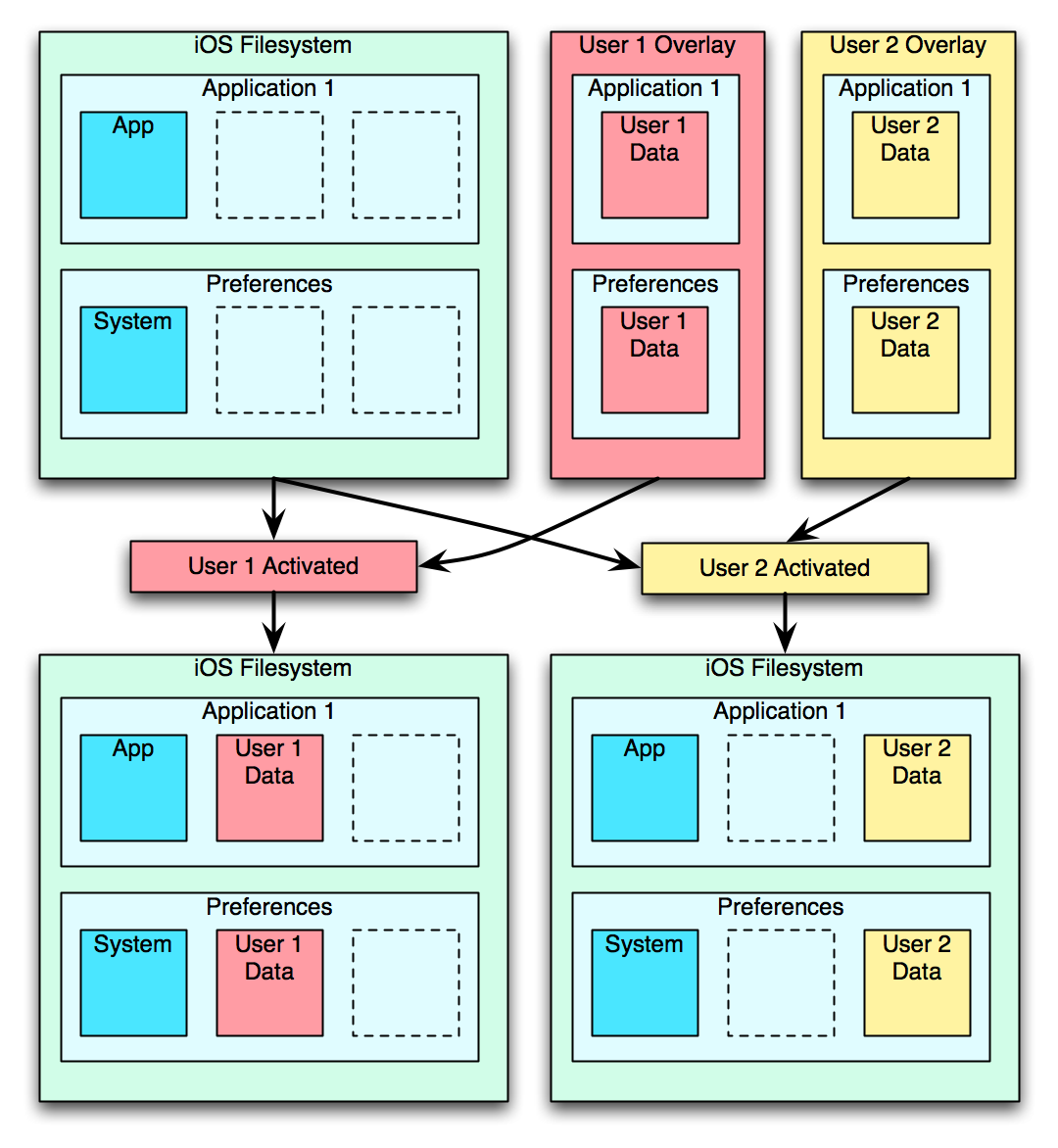Crazy idea for multi-user iPads
While lying on the couch last Friday, trying to decompress after a busy day and expecting an even more hectic weekend, I had a crazy idea for how Apple might implement multiple user accounts on iOS devices like the iPad.
File System Overlays.
Applications in iOS are all restricted to their own sandbox – that is, they can only access files and data within their own application bundle, and nothing else. So right off the bat, data’s pretty well segregated.
Now, imagine that there’s an easy way for the operating system to distinguish between the application itself and its data. Like if all apps stored data in, say, Documents and Private Documents and Caches and other similarly-named folders. Anything that’s user-specific would be pretty easy to identify and peel away from the rest of the app.
Here’s where the hare-brained idea comes in: Across the entire filesystem, take any of those such folders, and move them off of the main disk, and into a second filesystem that’s mounted as an overlay on the actual disk.
This is sort of weird. It probably needs a picture.

Separate User Data as Filesystem Overlays
The base iOS filesystem has system files (the operating system itself plus built-in apps and such), and has separate applications installed by the user. Let’s assume that each app stores user-specific data in a standardized place, like “Documents.”
The device simply puts all the Documents folder into a separate filesystem, then depending on which user has been activated, takes that filesystem and merges it with the base filesystem, overlaying the folders back into their proper locations. So to the device, to the apps, it’s as if nothing has changed. Data’s where you expect it to be.
You could merge preferences in a similar way. iOS already supports multiple configuration profiles, and dynamically merges them into a single active settings profile. So you could have perhaps one “master” account, that can make unalterable settings for the entire device, then create different users, each of which could add their own preferences to what’s already been defined.
Imagine going back to the main home screen, and doing a five-finger pinch to “zoom out” of the iPad and into a new screen with different users listed. Tap on a different user (and enter a passcode, if that user has one set), and the OS removes your overlay and installs the other user’s overlay. Then it’s a whole new iPad!
And the best part about this is it’s all handled at the operating system level. No changes to the applications are necessary (obviously, they need to be following at least some kind of predictable approach for storing data, though there might be some sneaky ways for the OS to figure that out on the fly as well). Of course, if users wanted to share data with other users on the same device (think music or videos), then applications would need to add support for that.
iOS already supports some pretty fancy magic at the filesystem level, with the built-in data protections present in iOS 4. (In fact, it was while musing on those protections that this idea occurred to me). So I don’t see this as being too far off in terms of difficulty to implement. Provided they can get the right filesystem support into the kernel, which I’m sure wouldn’t be too difficult.
Any comments? Is this totally whacked out, or is there some potential here? Also, think about taking this to the desktop…it could definitely add a lot more security to data at rest where multiple users (or the same user, with multiple roles) are sharing a system…..
(view Archived Comments from the old site)

